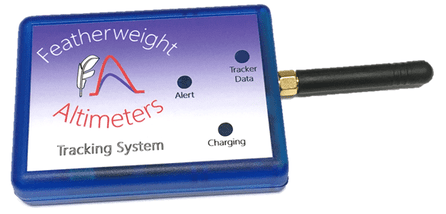In the fast-paced world of software development, particularly in high-performance computing and GPU programming, efficiency and productivity are key. One of the most powerful ways to enhance your development workflow is by integrating VIM with GNU Global (gtags) for CUDA development. This combination offers an incredibly efficient environment for navigating and managing large codebases, making it a must-have for developers who want to maximize their productivity.
Understanding the Power of VIM, gtags, and CUDA
VIM is a highly configurable text editor built to enable efficient text editing. It’s often referred to as a “programmer’s editor” because of its powerful features, such as syntax highlighting, text manipulation, and the ability to handle complex programming tasks with ease.
You may also read: Unlock the Power of Baiduwp PHP v4.0.3: A Comprehensive Guide
GNU Global (gtags) is a source code tagging system that allows developers to navigate large codebases quickly. It generates tags for source code, enabling users to jump to definitions, declarations, and references in an instant, saving valuable time.
CUDA (Compute Unified Device Architecture) is a parallel computing platform and API model created by NVIDIA. CUDA allows developers to use NVIDIA GPUs for general-purpose processing, offering massive parallelism and speeding up computation-intensive tasks.
Why Integrate VIM with gtags for CUDA Development?
Integrating VIM with gtags creates a powerful development environment tailored for handling the complexities of CUDA programming. CUDA projects often involve extensive codebases with multiple files and intricate dependencies. Navigating such projects without the right tools can be cumbersome and time-consuming.
By using VIM and gtags together, you can:
- Efficiently Navigate Codebases: gtags allows you to jump directly to the definition, declaration, or reference of any function, variable, or macro, drastically reducing the time spent searching through files.
- Enhance Code Understanding: With gtags, understanding the flow of your CUDA code becomes easier. You can trace the origin of a variable or see where a function is being called, leading to better debugging and code optimization.
- Boost Productivity: The seamless integration between VIM and gtags ensures that you remain in the editor while performing complex tasks, reducing context-switching and keeping your focus on coding.
Setting Up VIM with gtags for CUDA Development
To get started with integrating VIM and gtags for CUDA, follow these steps:
1. Install GNU Global (gtags)
First, you need to install gtags on your system. Depending on your operating system, the installation process may vary:
- On Ubuntu/Debian:
bash
sudo apt-get install global
- On macOS (using Homebrew):
bash
brew install global
- On Windows:
You can download the binary package from the GNU Global website and follow the installation instructions provided.
2. Configure VIM to Use gtags
Once gtags is installed, you need to configure VIM to use it. Add the following lines to your .vimrc file:
vim
if has("autocmd")
autocmd BufReadPost *.cu setlocal makeprg=global\ -v
autocmd BufReadPost *.cu setlocal ctagsprg=gtags-cscope
autocmd BufReadPost *.cu map <C-]> :cs find c <C-R>=expand("<cword>")<CR><CR>
autocmd BufReadPost *.cu map <C-\> :cs find e <C-R>=expand("<cword>")<CR><CR>
endif
This configuration sets VIM to recognize .cu files (CUDA source files) and enables gtags for those files. The mappings allow you to navigate the code using the Ctrl+] shortcut for jumping to definitions and Ctrl+\ for finding references.
3. Generate Tags for Your CUDA Project
Navigate to the root directory of your CUDA project and run the following command to generate tags:
bash
gtags
This command creates a set of tag files that gtags uses to index your codebase. Once generated, you can start using VIM to navigate your CUDA code efficiently.
Tips for Optimizing Your Workflow
To make the most of your VIM and gtags integration for CUDA, consider the following tips:
- Use VIM Plugins: Enhance your VIM experience by using plugins like
vim-cscope,fzf, orctrlp.vimfor more powerful searching and navigation capabilities. - Regularly Update Tags: After making significant changes to your codebase, regenerate your tags using
gtags. This ensures that the tag information is up-to-date, providing accurate navigation. - Customize Your .vimrc: Tailor your VIM environment to suit your needs. You can add additional shortcuts, customize your status line, or integrate with other tools like
YouCompleteMefor code completion.
Common Challenges and How to Overcome Them
While integrating VIM and gtags with CUDA can significantly improve your workflow, there may be some challenges along the way:
Tag Generation Performance
In large projects, generating tags with gtags might take some time. To mitigate this, consider using incremental updates with the --incremental flag:
bash
gtags --incremental
This option updates only the files that have changed, speeding up the tag generation process.
Handling Multiple Projects
If you work on multiple CUDA projects, managing tags for each project can become complex. One approach is to use separate tag files for each project and switch between them as needed. Alternatively, you can use the GTAGSLIBPATH environment variable to specify directories for multiple projects.
Dealing with C++ Integration
CUDA often integrates with C++ code, which can introduce additional complexity. Ensure that your gtags configuration in VIM supports both .cu and .cpp files for seamless navigation across CUDA and C++ codebases.
FAQs
What is the benefit of using gtags with VIM for CUDA development?
Integrating gtags with VIM allows for efficient navigation and management of large CUDA codebases, saving time and improving productivity.
How do I install gtags on Windows?
You can download the binary package from the GNU Global website and follow the installation instructions provided. Alternatively, you can use Cygwin or MSYS2 to install gtags on Windows.
Can I use gtags with other programming languages?
Yes, gtags supports various programming languages, including C, C++, Java, and Python, making it a versatile tool for different development environments.
How do I update tags after modifying my CUDA code?
Simply navigate to the root directory of your project and run gtags again, or use the --incremental flag for faster updates.
Is it possible to customize the key mappings for gtags in VIM?
Yes, you can customize the key mappings in your .vimrc file to suit your preferences. The mappings provided in this article are just a starting point.
What if my CUDA project is too large for gtags to handle efficiently?
For extremely large projects, consider breaking down the codebase into smaller modules or using GTAGSLIBPATH to manage multiple projects.
Conclusion
Integrating VIM with gtags for CUDA development is a game-changer for developers dealing with large, complex codebases. This powerful combination not only enhances code navigation but also boosts overall productivity by keeping you in a single, efficient editing environment. By following the steps outlined in this guide, you can set up a robust development workflow tailored for CUDA programming, allowing you to focus more on writing high-performance code and less on managing it.




